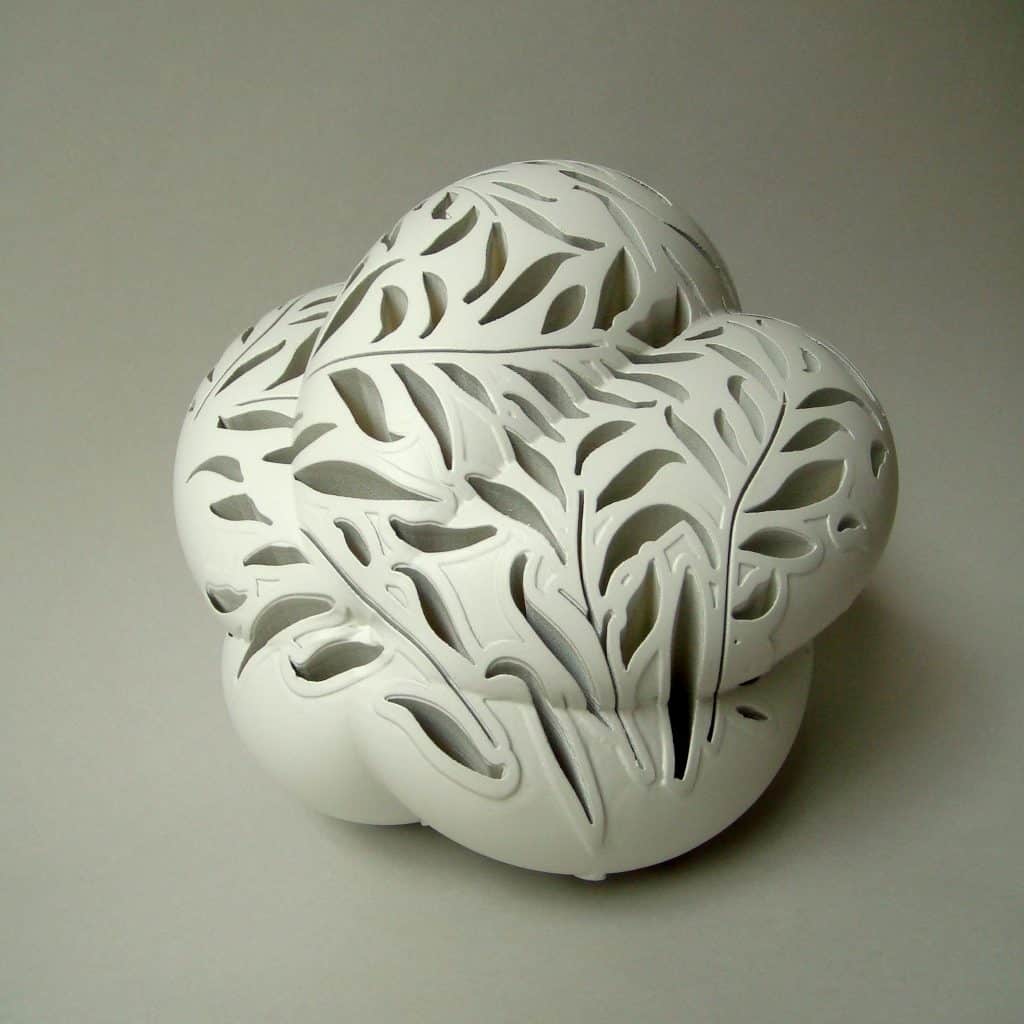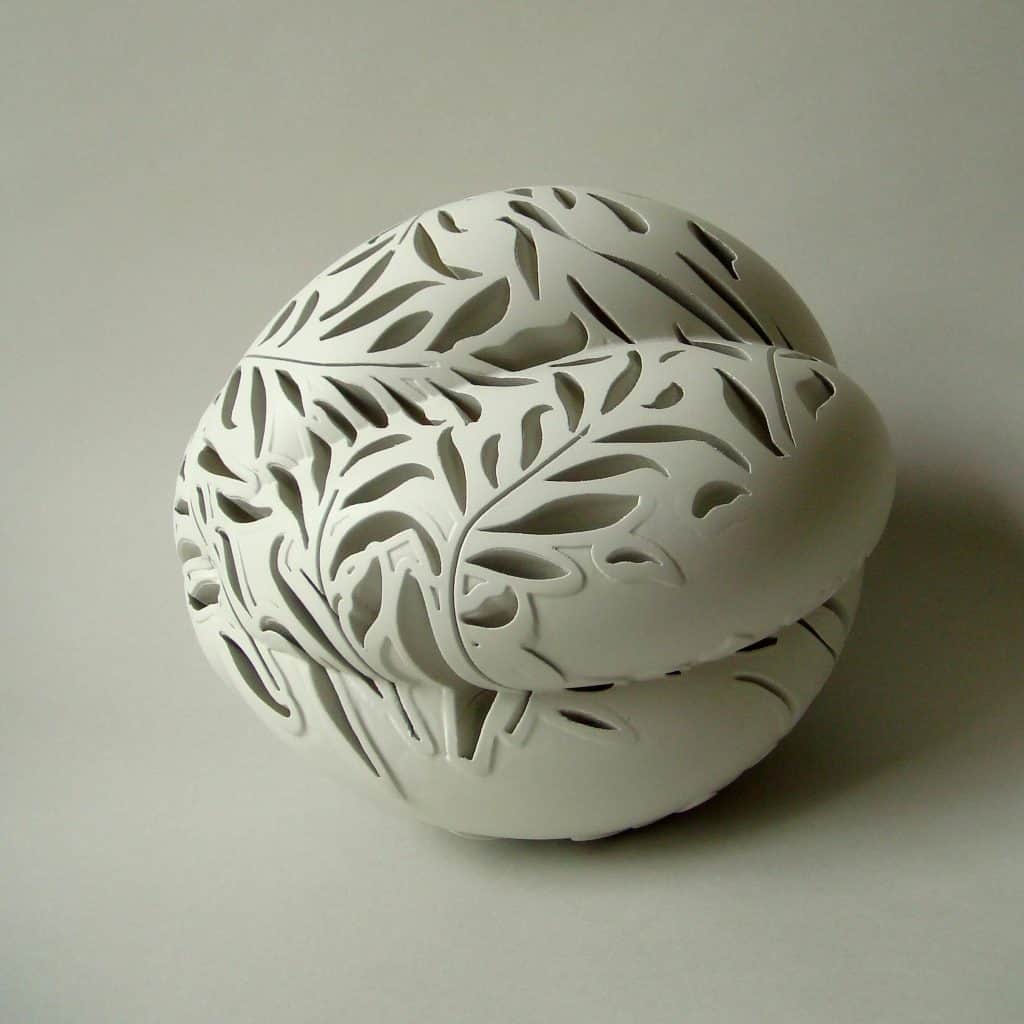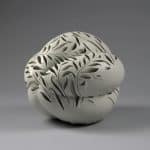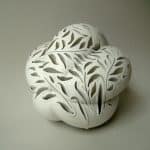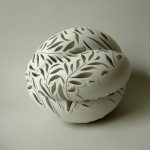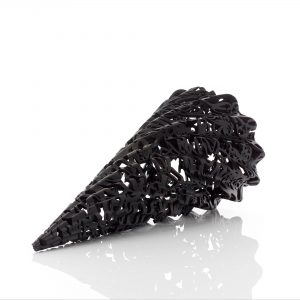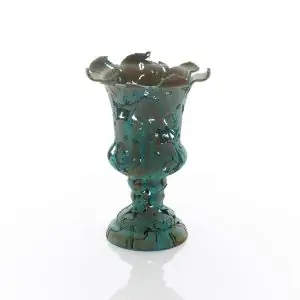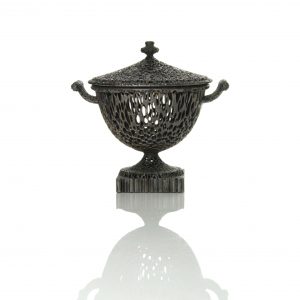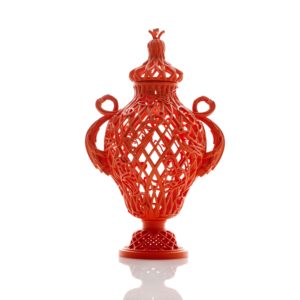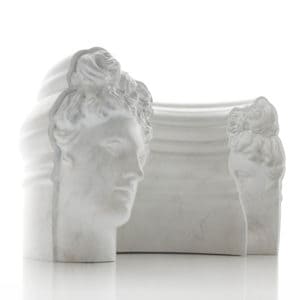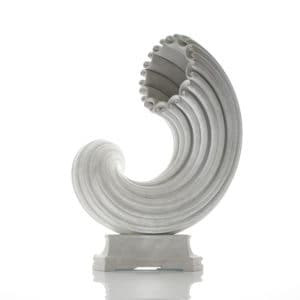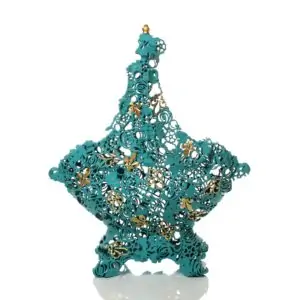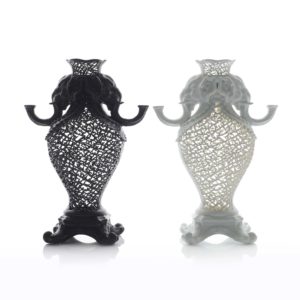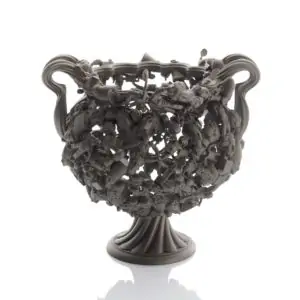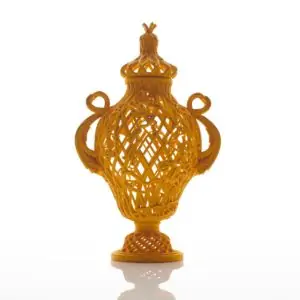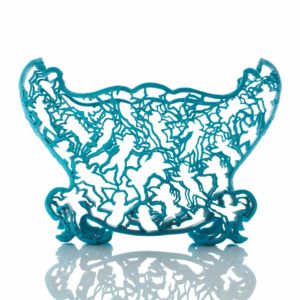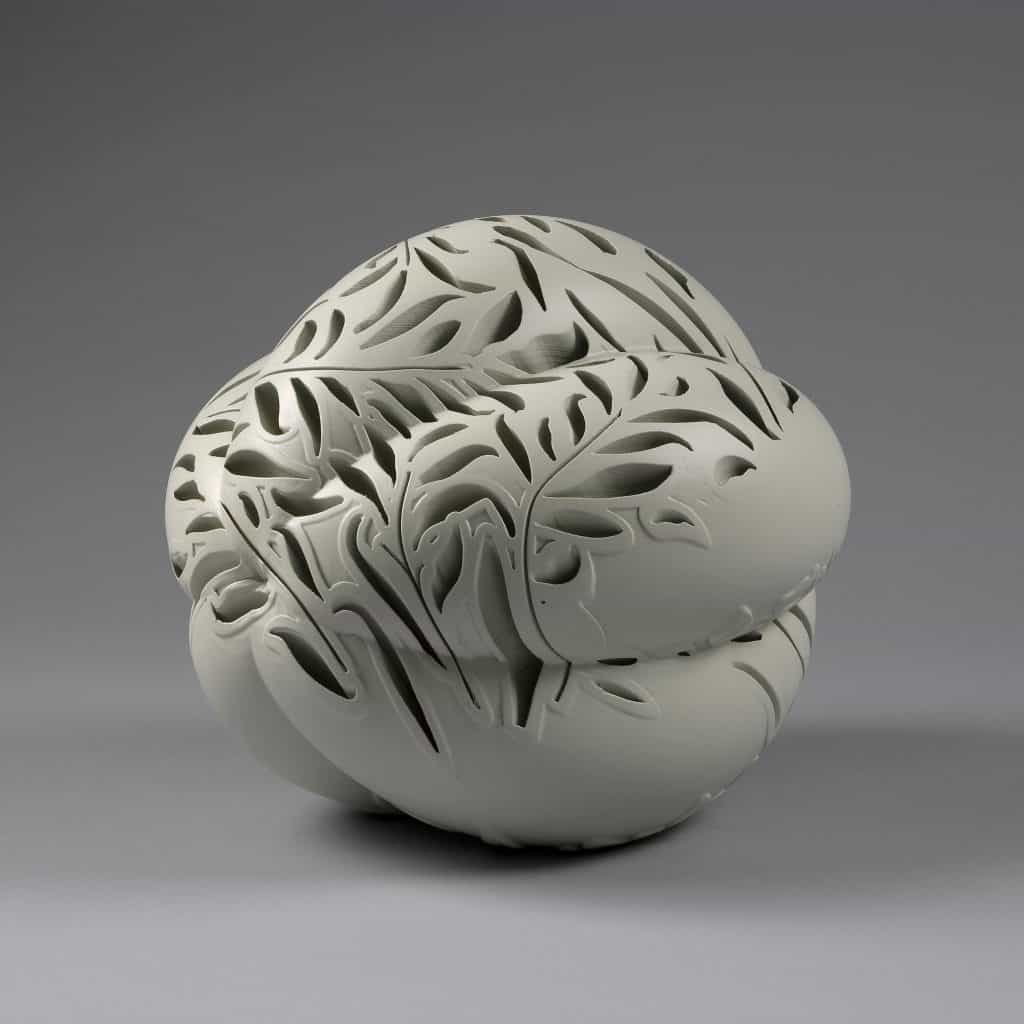
More about Salix Morrisia, 2010
'The title of this piece is a fiction, combining the Latin genus name for Willow and a reference to William Morris.During the second half of the 18th century, there was increasing acknowledgement of the dreadful working conditions and inhumanity of much industrial manufacturing. Alongside the political pressure to reform working conditions, movements such as the Arts and Crafts Movement became an idealistic force attempting to address these concerns. William Morris was a leading member of the group, aiming to put the theories of John Ruskin into practice by placing an emphasis on traditional skills, craftsmanship and the natural beauty of materials. He is widely regarded as being opposed to the use of mechanical means of production, and many of his textile designs are still in production.
Salix Morrisia is a response to the philosophy of William Morris. The form is taken from a micrograph image of willow pollen, something whose beauty we would not be able to appreciate without the development of sophisticated technology. The pierced pattern is taken from the Morris’s ‘Willow Boughs’ wallpaper and textile design, designed in 1887.


My aim is to demonstrate that the use of new technologies and manufacturing techniques can have artistic worth and involves refined levels of craft skills. For me, the idea leads the way, the tools and materials are then selected in order to translate that creative concept into an artwork.
I also firmly believe that the technology that I use does not replace anything that has come before; we simply have a larger toolbox at our disposal and it is the responsibility of artists and makers to choose the appropriate tools. Salix Morrisia was designed on Rhino3D CAD software, 3D printed in a plaster type material and then given a bespoke copper plated surface, which I then patinated.'
- Michael Eden, 2010

